Dr David Lilley was born in Leeds in 1940, the son of a homeopath and his family emigrated to South Africa in 1949. He studied medicine at the University of Pretoria and after qualifying spent 3 years at the Royal London Homeopathic Hospital and the London College of Osteopathy. He studied under Drs. Blackie, Twentyman, Raeside and Foubister. After obtaining his MFHom, David returned to South Africa and joined his father in a practice in 1966. He has been in an exclusively homeopathic and osteopathic practice for the past 47 years. In 1994 he started the first homeopathic course for medical doctors in South Africa. This course has now evolved into the SA Faculty of Homeopathy, of which he is the Director of Education. In recent years he has been in demand as a visiting lecturer in the UK and further afield. In his lectures he weaves together homeopathic art and science, analytical psychology, mythology, chakra and colour theory, natural science and spiritual philosophy to provide a rich tapestry of perennial wisdom and knowledge. He has been described as an “inspiring teacher with an incredible in-depth knowledge of the remedies who also shares many practical tips on the management of acute illnesses”.
Welcome to Hpathy Dr. David Lilley! It is a great pleasure for us to welcome you at Hpathy and we look forward to you sharing your wisdom and knowledge with us.
KS: You are the son of a homeopath whose family emigrated to South Africa in the late 1940‘s. What led you to follow in your father‘s footsteps ?
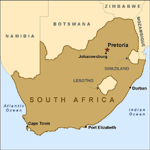
KS: You have studied under homeopaths like Drs. Blackie, Twentyman, Raeside, and Foubister. Where do you see their most important contributions for your professional development?
DL: Each of these teachers had something different to contribute and each in their own right was outstanding. Margerie Blackie was the Dean of the British Faculty and had a remarkable ability to vividly impart remedy pictures. Her enthusiasm and love of homeopathy were contagious as was her faith in the 10M potency. Ralph Twentyman was a man of great intellect and wide ranging interests, which extended to the deeper meaning of existence, the reality hidden in myth and anthroposophical medicine. Donald Foubister, a deeply compassionate physician, introduced me to paediatric homeopathy and his passion at the time: the development of the Carcinosin picture, a magnificent remedy that stands at the very centre of the materia medica. John Raeside, whose death in the BEA Trident airline disaster robbed homeopathy of a great mind, shared Twentyman’s interest in anthroposophical homeopathy. We discussed the universal philosophy of the Bhagavad-Gita, the science of homeopathic provings and the importance of the doctrine of signatures in understanding remedial action.
KS: You have spent 3 years at the Royal London Homeopathic Hospital which has reduced it’s homeopathic departments and care tremendously during the last decades. Where do you see the future challenges for homeopathy?
DL: The widespread reduction in homeopathic facilities is the result of an orchestrated political campaign being waged against homeopathy by the conventional powers that be, and fortunately does not reflect a decline in the influence or popularity of homeopathy amongst the public. The challenge must always be to present a united front (we have often failed in this in the past), to provide a high standard of homeopathic training for the profession, to educate the public (I regard the creation of a homeopathic public as being of paramount importance – an informed community provides the forces necessary to protect and sustain our science) and to afford our patients the best homeopathic care possible. This last injunction necessitates a homeopathic primary health care service capable of handling not only chronic constitutional treatment but also possessing the knowledge and skills necessary to treat the acute conditions met in general practice. Nothing can sway the public more strongly than the confidence derived from positive results achieved in the treatment of day-to-day injuries and ailments. Training, education and good practice outcomes are the watchwords as also in-depth knowledge of the tried and trusted remedies of the great masters of the past.
KS: Considering the closure of many large homeopathic facilities, how can homeopathic students compensate for this and gain sufficient practical experience to become successful homeopaths?
DL: This is one of the major difficulties we face in homeopathic education: lack of exposure to and experience in dealing with clinical situations. While the study of materia medica has to lay the foundation, and here again I would draw the student’s attention to the works of the old masters (Nash, Dunham, Cowperthwaite, Farrington, Kent, Borland etc), sitting in with an experienced practitioner and having a supervisor with whom to discuss and analyse difficult cases is invaluable. This said, if the general training in the basic medical sciences and clinical diagnosis is good, it is possible to acquire excellent homeopathic clinical expertise through conscientious study of appropriate textbooks.
KS: Homeopathy was introduced to South Africa in the late 1820‘s and has had it’s varied fortunes over the past centuries. Meanwhile, homeopathy in South Africa is strongly regulated by the government. How do you see the advantages (and disadvantages) of this regulation?
DL: The advantages are many. The practice of homeopathy is protected by law. The profession is regulated by a statutory body: the Allied Health Professions Council of South Africa. Homeopathic education has been standardised and is delivered by two universities: the University of Johannesburg (UJ) and the Durban University of Technology (DUC). Both provide a full-time five-year course covering the basic medical sciences, pathology, diagnosis and homeopathic philosophy, principles and materia medica. Nonetheless, the provision of hands-on clinical experience remains a weakness due to the lack of clinical facilities. This is a deficiency difficult to remedy because of the exclusive dominance of conventional medicine and lack of finance.
There should be no disadvantages. However, vested interests and the desire to maintain a monopoly inevitably rear their heads when control of a profession is gained. There has been no mandate to train registered members of associated professions e.g. dentists, pharmacists, nurses, physiotherapists etc., in homeopathy. Such training is essential to spread homeopathy’s base and establish it as a treatment of choice. The profession has done little to provide homeopathic education for the public. Protection of vested interest is a stumbling block.
KS: Homeopathy is taught at a high educational level in South Africa that enables practitioners to practice homeopathy as a primary contact health profession. What is the level of acceptance among South Africa’s citizens?
DL: There is a strong tradition of natural medicine in South Africa. This derived from the pioneers who came to South Africa from Europe. Public interest in alternative and complementary forms of medicine is widespread, but needs further cultivation. The provision of well-trained homeopathic practitioners has done much to strengthen homeopathy’s position in this country.
KS: In 1996 you formed the South African Homeopathic Medical Association (SAHMA), along with other medical doctors. What are the objectives and achievements of this association ?
DL: The association of which you speak has been subsumed under the Homeopathic Association of South Africa (HSA) which represents the interests of all homeopathic practitioners, both those who are medically qualified and those who graduate from the two homeopathic institutions. This has been a positive step, bringing the two groups together as one profession. I established the South African Faculty of Homeopathy in 1995, as an education institution for the homeopathic training of registered medical doctors. I was the Dean from 1995-2012. Our graduates are now contributing to homeopathic primary health care in SA.
KS: Your in depth knowledge of homeopathic remedies is mirrored in your beautiful masterclass lectures about the major archetypes of the materia medica. How did you come to synthesize these remedy pictures?
DL: Very early on in my study and practice of homeopathy, I became aware that homeopathy does not stand alone either as a science or as an art, and that to be able to understand a remedy in depth one has to approach it from various angles. Often the provings simply provide an armature that needs to be fleshed out from other related sources. Among these are the “doctrine of signatures” and the closely related study of symbolism; symbolism leads to the contemplation of the significance of colour and numbers. These, like the primary shapes, have archetypal meaning and significance. Colours relate to the major chakras and the energy system of the body; chakra science teaches us how these energy centres are linked to the organs and functions of the body and how they relate to levels of consciousness and miasmatic disease. The study of mythology yields a rich source of received wisdom and inspired insight into the nature of humanity and how this is lived-out archetypally. Study of the archetypes takes us into the world of the personal and collective unconscious, and the shadow world of the patient and the remedy, which must be matched to bring about healing at the deepest level: the soul. The laterality (sidedness) of remedies and the multifaceted nature of the human psyche revealed in case taking and in provings requires an understanding of: the id, the ego-self, the super ego, the anima and the animus, the persona and above all the shadow. To this rich mix must be added a study of chemical properties, geology, habitat, natural history and animal behaviour. Investigation along these lines provides exciting confirmation of the unity of all aspects of the creation and instils basic trust that all is presided over by a supreme loving intelligence.
KS: How can homeopathy support the journey to one‘s true self?
DL: In answering this question we need to consider what we mean by the true-self. I define it as the soul, which is distinct from the Self or spirit: the divinity within us all. Self-realisation or individuation is the journey and mission of the soul and the purpose of incarnation. The false-self is the ego-self, or the ego-personality, which through seduction, deception, delusion and fear convinces us that it represents our identity, stifles our awareness of the existence of the soul and dulls the subtle call of the Self. The ego is an exacting, demanding tyrant, which like a petulant, self-indulgent child drives us to steep ourselves in the senses and engross ourselves with materialism.
The ego-self is the disease from which the soul or true-self suffers, a disease that cascades down from the interface of conflict between the soul and ego to produce the symptoms and signs of emotional and physical suffering that present for treatment. The ego-self is the adversary that confronts the soul in its life-experience; in archetypal terms it is the dragon that stands athwart the path of the hero-soul preventing it from attaining the incalculable treasure of the Self. It must be overcome.
Like allopathic medicine, the ego-self establishes its pervasive dominance by acts of suppression consigning what it dislikes, cannot cope with, and mistrusts, to the shadow-self. This includes the power of the soul – its divine aspects. Potential counters to this suppression are the instinctive desire for expression of the id, the dormant power of the collective unconscious and the constant call of the Self expressed through the voice of the conscience. The conflicting forces are energetic and dynamic and demand a remedy able to act at a dynamic level. The homeopathic remedy administered in dynamic, potentised form and selected for the archetypal profile of the ego-personality (false-self) possesses the required frequency to reach into the collective unconscious and energise an archetype closely matching the presenting profile of the false-self and capable of opposing it. Repressed energy and forms within the shadow-self begin to move outwards towards the light of consciousness, the release of the functions of the id commences and the push and pull of the conscience increases: the true-self is empowered (in accordance with Hering’s law of healing). However, the adversary, the false-self, is cunning, full of duplicity, sly seduction and devious strategy and tenaciously defends its existence. As in the myths of old, it is a shape-changer, a trickster able to elude its enemy, presenting an altered profile, often a guise it has used successfully in the past (return of old symptoms), but with each change of shape it loses vitality. Adapting to the transformation, the experienced homeopathic physician selects a remedy possessing the new morbid frequency and another archetype is enlisted from the oceanic collective unconscious to do battle.
While much of homeopathy entails the treatment of physical ills and current emotions, depth homeopathy, as described above is soul medicine, bringing about healing on the soul dimension by progressively reducing the power of the false-self and releasing the true–self from the tyranny of the ego, thus facilitating the realisation of the Self.
KS: Do you educate your patients about the deep implications that true cure involves?
DL: When appropriate and possible, I do. It is a vital part of the healing process and indispensable when one has the full participation of the patient. Patients come to me for a variety of reasons: from an ingrown toenail to cancer, insomnia to suicidal depression. Expectations differ; participation and commitment vary and above all faith and belief, including religious and philosophical perspective, come in various forms. With some patients, one is constrained to keep the exchange on a pragmatic level with little if any mention of the esoteric significance of homeopathic treatment. But synchronicity ensures that there are always those patients who present when they have been prepared through life experience and personal growth for the application of depth homeopathy. These patients benefit immensely from understanding the profound significance of homeopathic therapy and are able to participate in the process through changing their way of life on every level and working personally on the overthrow of the false-self.
Many patients come wishing only for help on a material, physical level, but often in the process of treating their ailments, the remedies chosen bring about a quickening and they move within the fold and homeopathic education can begin; from then on treatment enters a deeper realm. My books are written to supply this understanding.
KS: You are said to be an inspiring teacher. Wherein do you see the art of teaching?
DL: Enthusiasm and joy of teaching are fundamental to the art. Wide-ranging depth of knowledge and experience are prerequisites. No matter how good these are; assiduous preparation is essential so that the knowledge and experience are refreshed and available. The ability to make even complex concepts simple and accessible is a great asset. The use of anecdote, stories, metaphor and analogy can convey information in a form that engages the audience and is more easily understood and remembered. There must be the addition of energy, enthusiasm, positivity and persuasiveness on the part of the teacher, qualities which are often described as charisma, and these all heightened by an acting ability that does not deceive but presents the truth with honesty, simplicity and humility.
KS: You are also an osteopath. In what way is osteopathy complementary to homeopathy?
DL: Apart from the obvious benefits derived from corrective manipulative techniques for musculoskeletal conditions, osteopathy affords therapeutic contact between therapist and patient enabling the transmission of healing power, as in the “laying-on-of-hands.” In depth homeopathy it is not only the remedy that is essential for the healing process, but also the healing ability of the physician: it is always “the singer and the song.” Osteopathy provides a practical means of applying healing energy. In addition, Osteopathy enables the practitioner to positively influence the energy centres of the body, the major chakras, through working on the associated spinal areas, thus strengthening the action of the vital force and modifying the function of specific organs. Osteopathy and homeopathy complement one another perfectly.
KS: Your promised, multi-volume series provisionally entitled “The evolution of the Homeopathic Archetype – A personal voyage into the Self“ is in progress. What can the reader hope for?

Volume One: The subtitle of the first volume is The lives of Samuel Hahnemann and William Lilley.
Part One of Volume One, The science of Homeopathy, presents an exposition of the founding and development of homeopathy through the life of Hahnemann and a number of early key figures e.g. von Bönninghausen, Jenichen, Hering. This incorporates homeopathic principles and methodology, homeopharmaceutics and an overview of the current challenges that homeopathy faces.
Part Two of Volume One, The science of Spirit, presents an exposition of the eternal interplay between the spirit and physical dimensions and the complementarity of spiritual and homeopathic healing through the remarkable life of my father.
Volume Two of Homeopathy: Healing the soul is subtitled: Science of the Archetype. This volume, building on the content of Volume One, introduces the concept of the patient as an immortal soul on a sacred journey in quest of the Self and then takes the reader into the world of the archetype; a world first explored by Socrates, Plato and Pythagoras. The archetypal structure of the psyche is thoroughly considered, followed by the evolution of the core homeopathic archetypes through stellar alchemy and planetary evolution and finally introduces key archetypes from the three kingdoms: mineral, plant and animal. These will all be developed after the manner of the Masterclass series but in greater depth.
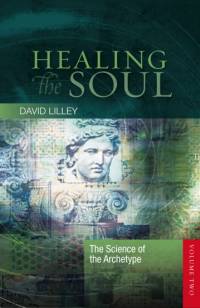
The manner in which the books are written makes them suitable not only for the profession, but also for anyone wishing to be informed about the principles and practice of homeopathy and the magic of the major archetypes. Like the Masterclass articles, they should appeal to the general public and assist patients in recognising archetypes within their family and circle of acquaintences. An informed patient can be of great assistance to the homeopathic physician.
Five books will follow volume Three, each dealing with the major remedies that constellate about each of the five chronic miasms. These remedy pictures will include the various themes that I have mentioned.
KS: Thank you very much Dr. Lilley for sharing your very interesting thoughts and experiences with us. I hope that your book will be available soon and I am sure that many homeopaths will feel inspired by your knowledge and teachings !
Katja Schuett
Editor
Homeopathy for Everyone

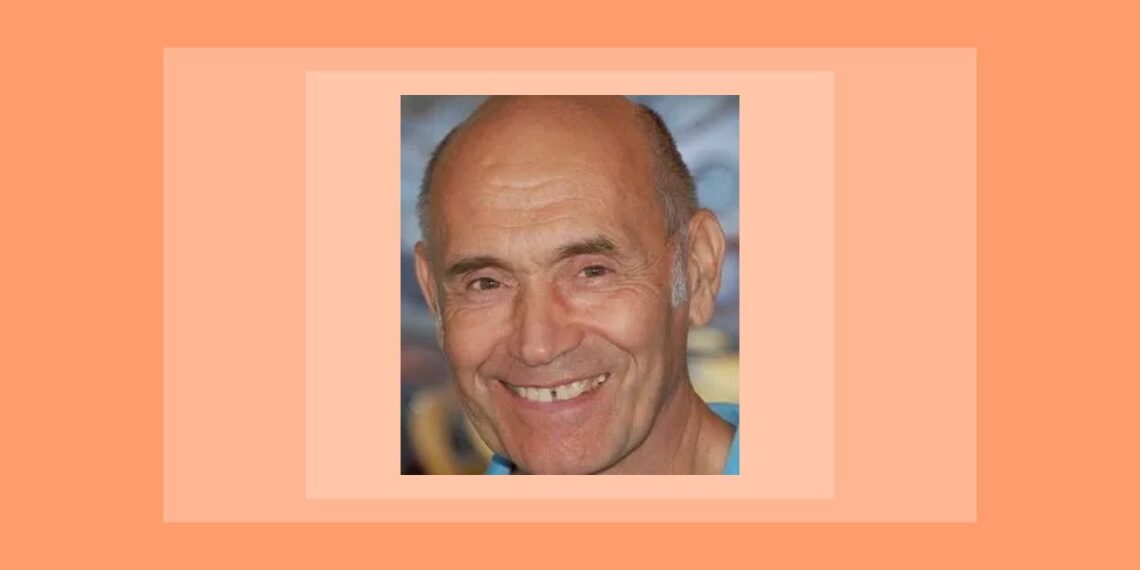

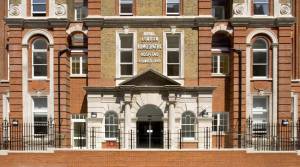
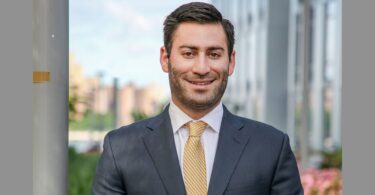
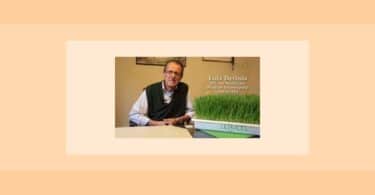


Seeing David Lilley teach is witnessing a tour de force. I really look forward to seeing his books!
Dear Katja Schuett
I have been a patient for about thirty years, actually even with davids father. I also had the privilage to attend two sessions with Dr. Letari. I am trying to contact David but just cannot get his Email address from the Onternet, obvioulsy he keeps it private. I am looking forward to his book in October.
I hope you can entrust me with his E-mail address so that I can send him my cancer profile I wrote for Dr. Turners “Radical Remission” project and take up some contact. I am sure he remembers me and would be interested to read my story of 19 years THE survival. I lost contact since I moved to California.
Thank you and sincerely
Klaus